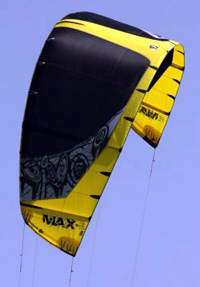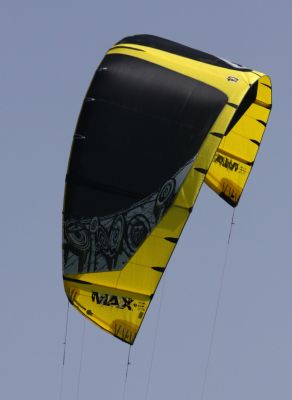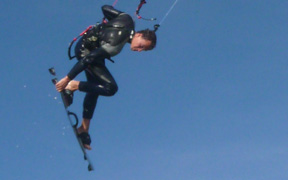We have added information to our content portal that can be reached via the navigation button above. Bigger & better every day!
A C-shape kite owes its name to its shape. Tilt a 'C' clockwise and you will get the shape of a C-shape kite. In contrast to Bow and SLE type kites, a C-shape kite does not have bridle lines ('bridle') but four or five connecting points.
Characteristics
A C-shape kite is radical, has a very fast but predictable turning circle and should also feel very solid when unhooked.
Target audience
The kite is intended for the pros, wakestyle, wakeskate, sliders, etc.
Points of attention
A C-shape kite cannot be debunked 100% ('depower'), which means that it can continue to pull just as powerfully in case of incorrect steering corrections, for example. This also makes the deployment range less than a Bow or SLE type kite.
Fifth line
The fifth point of departure is for the 'fifth line' system with the aim of increasing safety and restartability. The fifth line is activated in emergency after the quick release system has been activated. In this way, the kite surfer can get all the power from the kite at any time.
In addition, putting on the fifth line can help to restart, especially with larger kites that have fallen into the water. The kite tips over faster with the help of the fifth line pull.
Do you have an addition and / or amendment proposal to this article, submit it via the contact page or respond below so that fellow kiteboarders and interested parties can benefit from this.






The high altitude walking is certainly true, however for beginners it is much easier to learn to walk altitude with a bow or sle which will increase the boating pleasure faster.